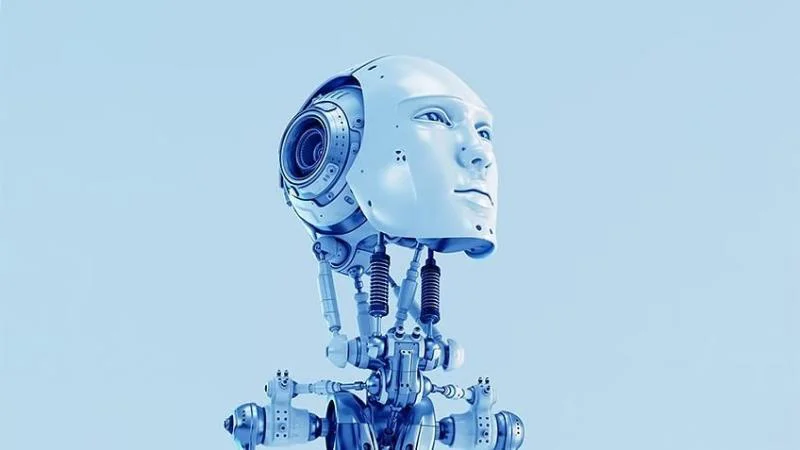Artificial Intelligence (AI) and Machine Learning (ML) are two related but distinct concepts in computer science. AI is a broader concept that emphasises the development of intelligent machines capable of conducting tasks without explicit human programming. These tasks include problem-solving, learning, perception, and natural language comprehension. The primary objective of artificial intelligence is to enable machines to mimic or replicate human intelligence.
Machine Learning, on the other hand, is a subset of AI that focuses on the development of algorithms and models that can learn from data and make predictions or decisions based on that data. ML systems enhance their performance by recognising patterns and automatically adjusting their algorithms. This allows them to adapt to new data inputs and increase accuracy over time without explicit programming for each task.
The key difference between AI and ML resides in their respective approaches and objectives. To accomplish intelligent behaviour in machines, AI encompasses a variety of techniques and methodologies, including machine learning (ML). ML, on the other hand, focuses on the development of self-learning models that can analyse and interpret data to make informed decisions. ML focuses on enabling machines to learn from data and improve their performance over time, whereas AI seeks to create machines with human-like intelligence.
What is Artificial Intelligence (AI)?
Artificial intelligence (AI) is a branch of computer science that tries to make machines that can do jobs that usually require human intelligence. It includes making algorithms, models, and systems that let machines learn, reason, and change based on what they see or are told. The main goal of AI is to give machines intelligence similar to that of humans so that they can do things on their own and do them well.
AI includes many subfields, such as machine learning (ML), natural language processing (NLP), computer vision, robotics, and expert systems. Each subfield works on a different part of AI, such as learning from data (ML), understanding and making up human language (NLP), and seeing visual information (computer vision). Robotics uses these things to make smart physical agents that can interact with their surroundings.
Rule-based systems, search algorithms, neural networks, and evolutionary algorithms are some of the most essential tools used in AI. These methods allow AI systems to solve problems, recognise patterns, understand language, and make decisions. Thanks to its growth, AI has been used in many fields, such as healthcare, finance, transportation, and manufacturing. AI-powered systems have changed how we use technology, automate processes, and make choices based on data, leading to more efficiency, productivity, and new ideas.
What is Machine Learning (ML)?
Machine Learning (ML) is a subset of Artificial Intelligence (AI) that focuses on making algorithms and statistical models that allow machines to learn from data and make predictions or choices based on that data. It is based on the idea that machines can get better at what they do and adapt to new information without needing to be programmed explicitly for each job.
The main goal of machine learning is to make models that can learn independently, find patterns, extract information, and draw conclusions from data. These models can be taught to, among other things, spot trends, sort data, and predict what will happen in the future. Three main types of machine learning techniques exist “supervised,” “unsupervised,” and “reinforcement.”
Using labelled data, where each data point is linked to a known result, a model is trained using supervised learning. This lets the model determine how the input features and the desired outcome are linked. On the other hand, unsupervised learning works with data that hasn’t been labelled and looks for patterns or structures in the data itself. Reinforcement learning is a dynamic method in which an agent learns to make choices by interacting with its environment and getting feedback through rewards or penalties. Image recognition, natural language processing, recommendation systems, and self-driving cars are ways machine learning can be used in different industries. This helps to drive growth and make better decisions.
Difference Between Artificial Intelligence and Machine Learning
Artificial Intelligence (AI) research aims to develop computational systems that can learn and solve problems in the same way humans do. Incorporating human-level intelligence with mechanical systems, it spans a wide range of approaches. Machine learning (ML) is a subfield of artificial intelligence concerned with creating methods by which computers can learn and enhance their functionality through data exposure and analysis. In contrast to ML’s focus on enabling autonomous machine learning and adaptation depending on data inputs, AI’s overarching goal is to develop machines that are on par with humans in terms of intellect. Here, we’ve outlined the essential differences between AI and ML so that you can make an informed decision.
Scope
While artificial intelligence (AI) encompasses many different approaches, machine learning (ML) is a subfield of AI exclusively concerned with data learning.
Goal
While artificial intelligence (AI) aims to create intelligent machines, machine learning (ML) seeks to develop models to learn from data and make predictions or decisions.
Approach
Artificial intelligence (AI) uses rule-based systems, search algorithms, and other methods. In contrast, machine learning (ML) is predicated on creating algorithms and models that learn from data.
Adaptability
While some AI systems may need tweaking by hand, ML models are meant to learn and improve independently as they are fed new data.
Learning Process
While ML focuses on supervised, unsupervised, and reinforcement learning, AI can use various learning techniques.
Knowledge Representation
Whereas artificial intelligence uses symbolic representations or logic-based systems, machine learning frequently uses numerical representations, such as the weights in neural networks.
Programming
In contrast to ML models, designed to be as hands-off as possible thanks to their ability to learn independently, AI systems often require more explicit programming.
Applications
Many fields, like robotics and computer vision, can benefit from AI, not just those traditionally associated with it. Data-driven applications are where ML excels, and this includes things like recommendation systems, NLP, and picture recognition.







